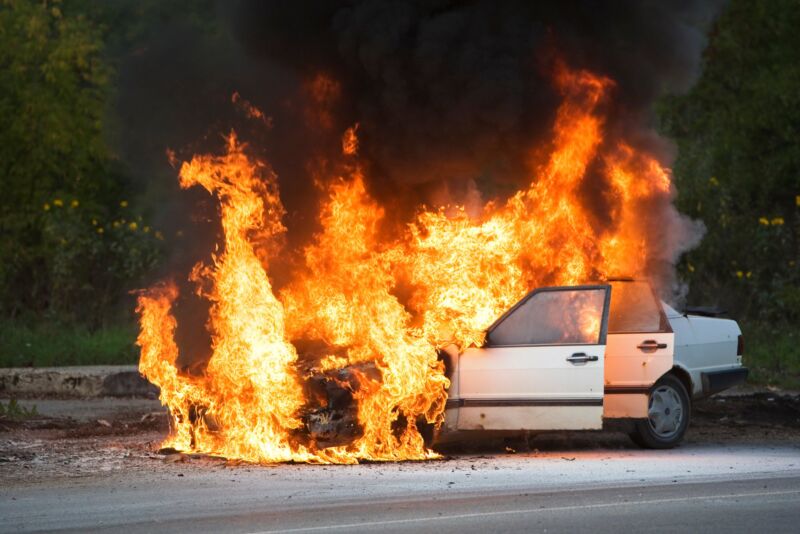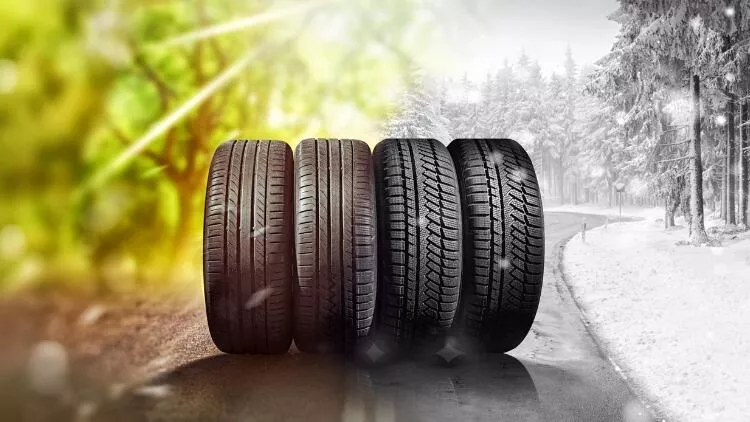How to Act in the Event of a Fire Caused by a Short Circuit in the Vehicle?

Vehicle fires can happen to any driver. Encountering a fire while driving is a very stressful situation for any driver. According to research, 69% of vehicle fires occur in the engine compartment, 35% are due to the passengers, 3% are caused by the fuel tank, and 2% result from tire and headlight overheating.
The most common cause of fire in a vehicle is a short circuit. In addition, fires can also occur due to neglect or technical failures in your vehicle. External factors can also contribute to vehicle fires. Regardless, even though vehicle fires are alarming, it is important to know how to react in case of a short circuit to minimize the damage.
-
Pull the Vehicle to a Safe Area: If a fire breaks out while driving, the first thing you need to do is stay calm. If you lose your composure, a bigger disaster could follow. Once you are calm, make sure to pull the vehicle to the safest area possible. Then, turn off the ignition and engage the handbrake to ensure the vehicle does not move. After that, slightly open the hood and move away from the vehicle.
-
Call the Fire Department: After moving your vehicle to a safe location and ensuring you are safe, immediately call the fire department. If your phone is inside the vehicle and you can’t reach it, ask for help from nearby people to contact the fire department. Make sure to give the exact location of your vehicle.
-
Use a Fire Extinguisher Until the Fire Department Arrives: After calling the fire department, if the cause of the fire is a short circuit, immediately use the fire extinguisher in your vehicle. When using a fire extinguisher, make sure to hold it in a vertical position near the flames. Also, position yourself against the wind to fight the fire. If the fire extinguisher in your vehicle and nearby extinguishers cannot put out the fire, the car might be completely destroyed. Therefore, always have a first-aid kit and a fire extinguisher in your vehicle.
-
Turn Off the Engine and Leave the Vehicle: If there is a fire, and you have safely pulled over, follow these vital steps before leaving the vehicle. First, turn off the engine. If you can, open the windows; if not, break the windows. This is critical because carbon monoxide will enter the vehicle as the smoke fills up. If you can’t leave the vehicle, breaking the window is very important to let the carbon monoxide escape. If there are others in the vehicle who cannot exit, use the window breaker from your first aid kit to help them.
-
Stay a Safe Distance from the Vehicle: If your vehicle is on fire, there is a risk of explosion. Even if you intervene, keep a safe distance from the vehicle. Fuel or upholstery may catch fire, leading to an explosion. To prevent further damage, make sure to stay far enough from the vehicle. You should also warn others to stay away from the vehicle.
-
Disconnect the Battery Terminals Immediately: If the fire is caused by a short circuit, open the hood and disconnect the battery terminals. If you do this early, it might stop the fire from spreading. However, if you are unsure about the cause of the fire, disconnecting the battery is always a good precaution. If you can’t do that, use the other recommended methods while waiting for the fire department.
How to Prevent Short Circuit Fires in Vehicles:
To prevent a short-circuit fire in your vehicle, follow these steps:
-
Regular Maintenance of Fuses: Fuses protect the vehicle’s electrical system against high currents. A failure in the electrical system can lead to a fire. Regularly maintain your vehicle’s fuses and replace them if necessary with the correct amperage.
-
Don’t Skip Regular Maintenance: Regular maintenance of your vehicle’s mechanical and electrical systems is crucial in preventing fires. Ensure to get your vehicle checked regularly, especially the electrical system, at least once a year.
-
Maintain the Battery Properly: The fuel line and faulty wiring are key contributors to potential fires. Also, a malfunctioning or neglected battery can cause a fire. Regularly maintain your vehicle’s battery to prevent leaks and make sure there is no accumulation near the contact points. Clean the battery area every few months with a brush, and get it checked at least once a year.
In conclusion, by taking the necessary precautions, the likelihood of a short-circuit fire in your vehicle is low. However, if such a fire occurs, the first step is to leave the vehicle, disconnect the battery terminals, use the fire extinguisher, and wait for the fire department.











